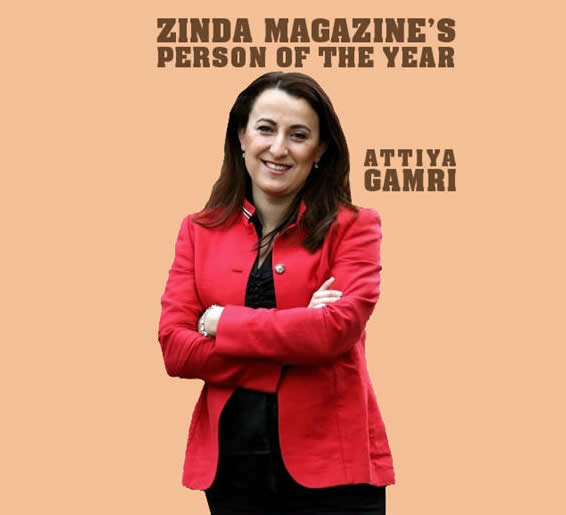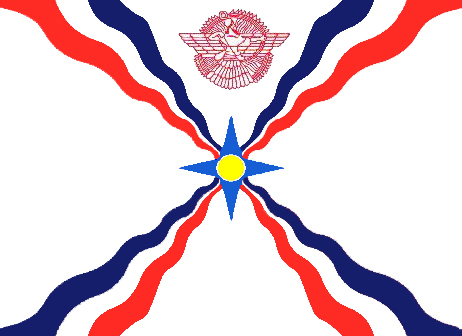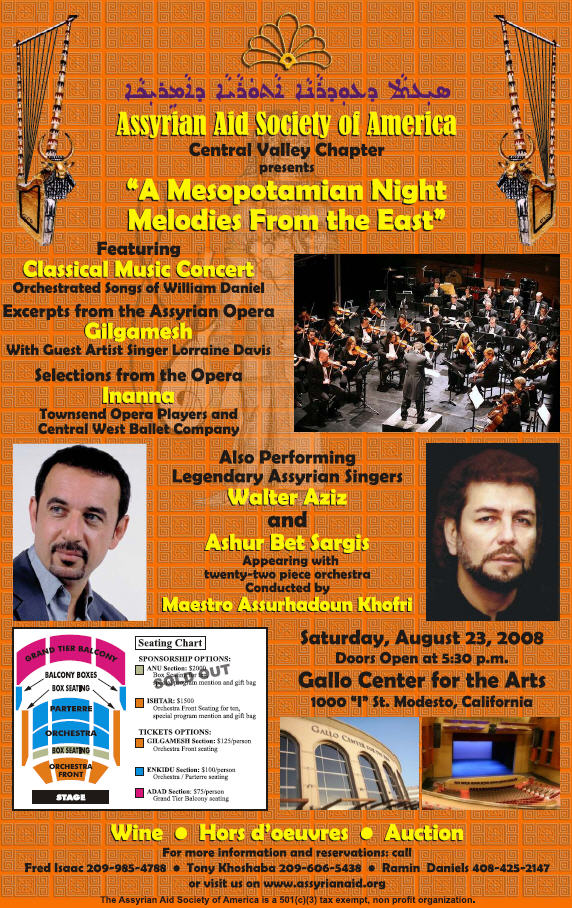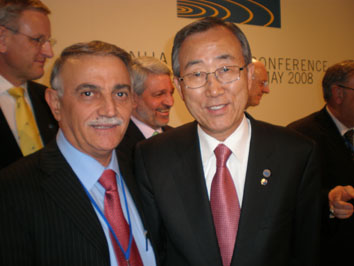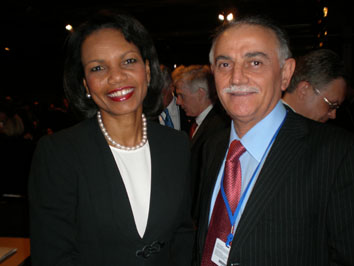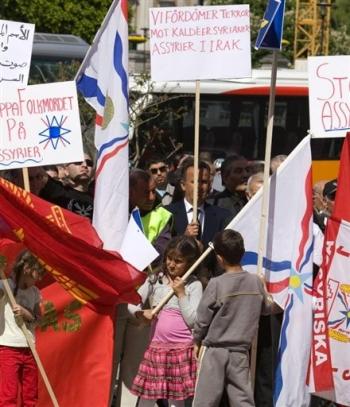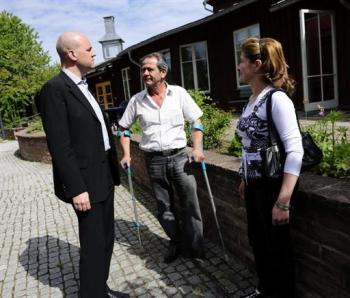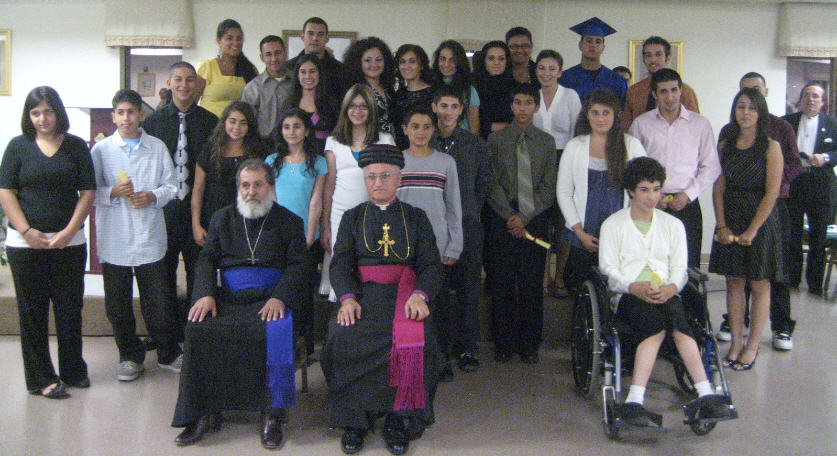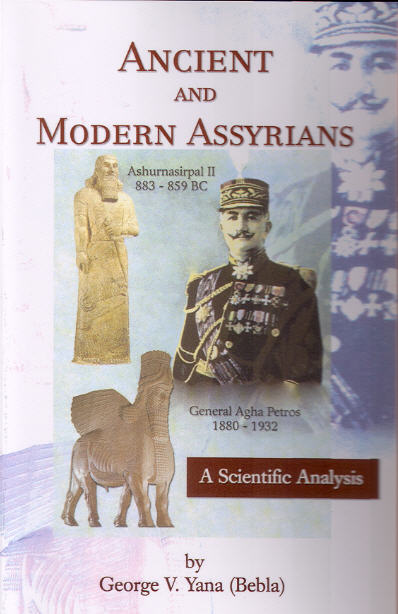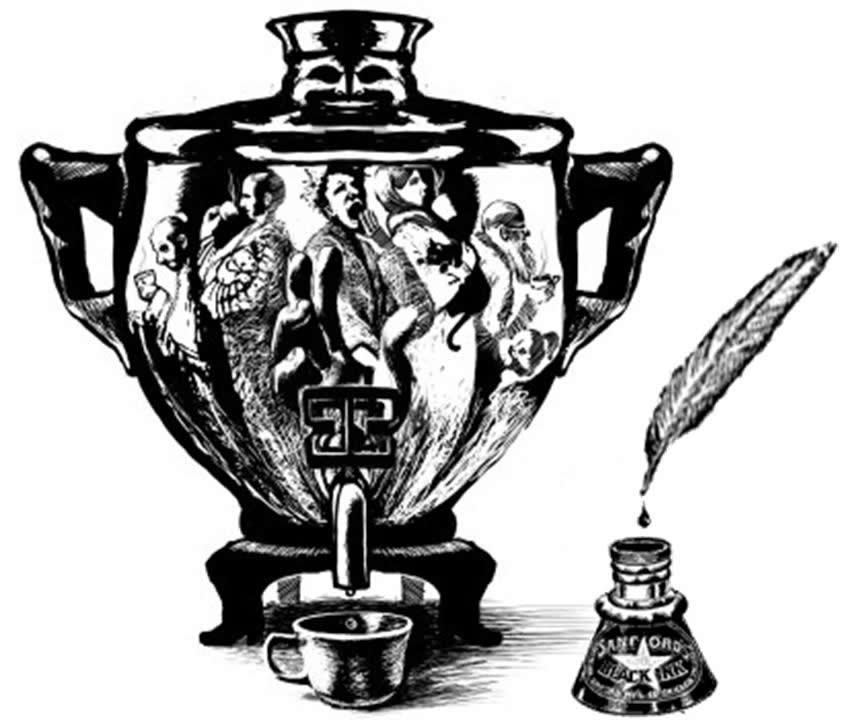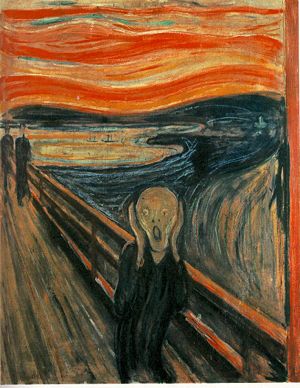Person of the Year
Joseph Hermiz
Arizona
Mr. Nobody!
That is who we find as the 2008 Assyrian of the Year.
Not to say that the works of those nominated have been in vain, but, they have not furthered our Assyrian agenda to the extent to which outsiders would consider acceptable. Most practically, the best the 2008 Assyrians attempted was to re-inform or re-edify the Assyrian people of our struggle. Can this truly be successful in attaining a nation 5 years into a war that is still in its birth? There was and still is a need to reach out to the legislative and legal arms of our communities throughout the world.
Unfortunately, 2008 was the year of big ideas, and little action.
We saw the emergence and progress of the Iraq Sustainable Democracy Project (ISDP), but with it, we saw the same reviled interest groups assert their influence in promoting it. In example, it would be assumed that African-Americans wouldn't’t attend a Black Nationalist Conference, regardless of how proactive it might really be, if it is heavily endorsed by the KKK. We saw the tremendous work of Sabri Atman in exposing the past and continuous Turkish coercion of our people, but with it, we saw many Assyrian political and religious leaders run to garner the support of the Turkish government in advancing their own agenda. For the most part, there were inconsistencies throughout the Assyrian community. Perhaps, one pertinent goal for 2009 would be to create one universal Assyrian Human Rights Watch Organization to promote the Assyrian agenda throughout the world vis a vis the American Israeli Political Action Committee (AIPAC). The organization or individuals, who could rally some type of universal movement such as this, would easily deserve the award in 2009.
However, what we came to see in 2008 was for the most part discouraging. Many of our religious and political leaders used 2008 as a year to advance their divisive and self-aggrandizing agendas. One of the more perplexing complexities in 2008 was once again our national representation. Rather then uniting as Assyrians, we united as Christians, eliminating our ethnic advantage in both Diaspora and in Iraq. You don’t have to look too far to see of clear evidence of that. Simply search ‘Iraqi Christians’ on the net and more often then not you won’t see a single reference to the origins of the ‘Christians’ of Iraq.
Our political representatives still employ unpopular and unsuccessful policies and practices throughout the world. Not to mention, other then the voices shared in places like Zinda, Assyrian media outlets have become nothing but channels for political and social propaganda helping poison the minds of younger Assyrians and stirring the emotions of the older generation. Furthermore, we have now seen how dissent and questioning is treated in the Assyrian community, by complete isolation and continuous torment and coercion from those that are questioned.
The question then comes to this writers mind, how are we any better then those marginalizing and cheat us, when we marginalize and cheat one another?
But, the Achilles heal of the Assyrian community is its blind judgment in laying its fate in the hands of the West when it comes to securing a homeland. If Assyrians haven’t learned one thing, it is most certainly the fact the West does not share the same sympathies with us as we do to it. Rather, the West is tediously working to build illegal Islamic states such Bosnia and Kosovo. We don’t have to look too far to see the injustice the West continues to lay upon on the East. Yugoslavia, an ally of the United States and Europe during World War II now sees the West meddling in its national affairs and forcibly cutting and dividing its nation just as it did the Middle East after the Great War. Assyrians continue to lack vision. We continue to see hope for ourselves coming from the West, because after all, “they are Christians like us.”
We have made our situation so difficult, it is almost impossible at this point to know who to support and who not too.
So, with that all said, was 2008 a lost cause? In all fairness, it was not really. Rather it was merely an experimentation that occurred for many organizations as they now begin to take the next incremental steps to changing and advancing the Assyrian agenda (hopefully for the better).
For the upset readers, try to understand it in this context; are Assyrians any closer to a homeland now, then when the Iraq War began in 2003?
 Joseph N. Hermiz is an Assyrian-American writer and Assyrian political activist. Joseph N. Hermiz is an Assyrian-American writer and Assyrian political activist.
Responses to Dr. Malik's Article
Sargon B. Yalda
Chicago
In response to Dr. Lincoln Malik's Zinda Magazine article "A Child of Unity Is Born Unto Us", although I do agree that we should let bygone be bygones and move forward, I shall not stand by and give those who repeatedly err and insult my Church and Nation another opportunity to set progress aback.
More appropriately, the article should have been labeled "An embezzlement scheme thwarted", because at the bottom of the whole conspiracy, were twenty Million dollars and an obdurate attempt to destroy the authority of the Assyrian Church of the East (ACOE).
Recently, a video production of ex-Bishop Soro's speeches has surfaced, in which he repeatedly denies some of the allegations and rumors surrounding his ultimate goal, and I quote; "I am trying to convert you people into Catholics" and "Make you 'papaye'". Hind sight it was all so comical.
As for Mar Sarhad Jammo; all one has to do is go into Zinda Magazine archives, and you shall see the hypocrisy for yourselves. Here are a few excerpts from those articles:
February 3, 2003: “Now it appears that after more than a decade, a bishop in the Diaspora and his Chaldean followers have found Moses' Stick, and by just one magical stroke are able to create a five thousand year old nation --"The Chaldean Nation"-- a nation separate from the Assyrians. The "Chaldean Renaissance" a novelty of Bishop Mar Sarhad Jammo is not only a historical sophism, but a flagrant contradiction with the facts and reality.”
May 12, 2003: “The man at the forefront of monitoring and confronting the Assyrian-Chaldean identity denial was none other than Mar Sarhad Jammo, the controversial Chaldean bishop whose signature at the bottom of the statement released on Saturday effectively annulled over twenty years of his dedication toward the unity of the Chaldean and non-Chaldean Assyrian people.”
October 13, 2003: “The new Chaldean Bishops' attempt to forge an ethnicity distinct from Assyrians and Syriacs has been championed primarily by Bishop Sarhad Jammo of the St. Peter the Apostle Chaldean Catholic Diocese in California. Upon his appointment as Bishop, Bishop Sarhad Jammo quickly embarked upon a separatist agenda. In a May 10 memorandum from San Diego, Bishop Sarhad along with Bishop Ibrahim Ibrahim, the Bishop of Michigan, formally asserted a separate Chaldean ethnicity, rejecting a common political or nationalist purpose with Assyrians.”
September 28, 2004: “The Chaldean Catholic bishops in the United States, namely Mar Sarhad Jammo and Mar Ibrahim Ibrahim, were initially behind the de-Arabization of the Syriac-speaking Catholics in Iraq. They promoted the title of Chaldean as separate from the Assyrian in U.S. Census 2000. On September 3, 2003, 19 bishops from the Chaldean Catholic Church sent a letter to Ambassador Paul Bremer, Civil Administrator of Iraq at the time, demanding separate representation in Iraq.”
April 6, 2005: “Let us not be easily deceived: it is not an error, nor a misunderstanding. It is not the first time that Mar Sarhad Jammo tries to divide our people in several components. His conference of Chicago is only an additional drift.
April 13, 2005: “According to Zinda Magazine on.24 February 2005 Bishop Sarhad Jammo delivered a speech to his followers in San Diego perhaps a typical lecture by him and others intended to further alienate members of the Chaldean Church from their Assyrian heritage. Judging by the content of this speech it is no wonder that there is so much hostility by the member of the Chaldean Church toward their Assyrian ancestry and Assyrians in general.”
June 18, 2006: “After Mar Sarhad Jammo, the Chaldean Bishop from the U.S., who did everything to divide Assyro-Chaldeans with absurd arguments at various conferences in the United States, the Patriarch of the Chaldean Catholic Church, Mar Emmanuel III Delly, is beginning to do his share of the "Chaldean" nationalist activism.”
And last from 2007, although not yet archived, how could anyone forget Mr. Wilfred Alkhas's article on the San Diego Assyrian AANF convention, when a group of organizers had asked Bishop Sarhad Jammo to bless the convention and his response was "Yours' is an Assyrian convention, you should ask an Assyrian Bishop to do that", as they were repelled.
Now, does Dr. Malik truthfully still believe that such a man is seeking “Unity”? I know he wrote that you would expect these arguments, attempting to pre-disqualify them, which by the way is like telling a boxer: “I will punch you in the face, but I don’t expect you to either protect yourself or punch back”, but coming from a 66 year old veteran politician, born and raised a Presbyterian, one has to question his authenticity and rationale for posting such an article. Is he telling us that it took him 66 years that his was following the wrong denomination of Christianity? If he answers ‘yes’; then he would upset many other Assyrians including half of my own family who is Presbyterian.
It is not his religious propensity that troubles me, but rather his political title as the former director of ADM in North America. We must all learn to separate Church and State if we are ever to move forward. Indeed, what ever has happened in the Church is behind us, but please do not mix it with the notion of Assyrianism.
Dr. Malik and other political leaders like him owe it to themselves to work together towards a common goal that will benefit our Nation as one, because these are very vulnerable times for our people. All of our political parties should embark upon a new constructive dialogue through which we will portray our unity, and not through some religious means.
Personally, I feel that our leaders in the past have already neglected several opportunities for our nation to become an independent entity in this century; and I would hate to see another prospect wasted because of incompetent leadership and internal discord. I believe that all of our political forces should be working with each other; first to define their common objectives and then towards making them a reality.
We should also divest our organizations and political parties from unqualified and incompetent individuals, which I deem as the main cause of inept negligence and backwardness.
As for Church matters; for most of us, the Assyrian Church of the East, a 2000 year establishment, has been our nation's pillar for centuries. Therefore, when Dr. Malik writes "To those who say 'you became a Catholic,' I say yes we did, and why not,” I ask you: "Who ever stopped him to begin with? In fact who ever stopped the ex-Bishop?" People leave and join the Assyrian Church of the East all the time, and I am happy to report to you sir, that ACOE today is the strongest it has ever been.
The 'Soro-schism' movement has all but expired now, it is only fueled nowadays by stubbornness and shotanayota, which has always plagued our nation and it is just a matter of time when everyone will come to their senses.
Dr. Malik also writes: "I am not naive to believe that there will not be obstacles along the way." Let me say this to Dr. Malik: the obstacles were erected by Mar Sarhad Jammo with the full knowledge of ex-Bishop Bawai, and only time will prove their real intentions behind this so-called "Catholicization" of a few rouge Assyrians.
Paul Isaac
Dubai
In Response to Dr. Malik: A Dream or a Fantasy?
I have grown quite used to reading in these pages ridiculous revisions of history and willful ignorance of facts when discussing the former bishop of the Assyrian Church of the East, Ashur Soro. However, Dr. Lincoln Malik’s incredible mental gymnastics around history and through the truth is nothing short of astonishing. I chuckle to myself as I wonder if Dr. Malik actually has come to believe this conjectured fable.
I do not wish to dwell on the many issues and betrayals which led to the schism. I and others have discussed these in the past and the truth is out there for those who wish to know it. Whatever justifications the former bishop and his followers felt they had, the facts are the following: the Synod of the Assyrian Church of the East (the “ACOE”), under the authority of its Patriarch and to whom the former bishop swore to obey, delivered a judgment in 2005. This judgment found that the former bishop had violated his oath of allegiance and presented him with several options to remain inside the fold of the Church. The former bishop rejected the ruling of the Synod. If the former bishop felt such conviction to join the Roman Catholic Church and submit to the authority of the Vatican, and if this was truly Dr. Lincoln Malik’s “dream” that he had “long thought about”, why did they not spare this nation the agony and simply fulfill their dream in 2005? Instead, the former bishop attempted to appropriate for himself substantial financial assets of the ACOE and force the Church to secure these properties for its sons and daughters through the court of law. After much expense in dollars, time and energy, the ACOE was granted its properties in accordance with what any reasonable person could have foreseen three years prior. Throughout the ordeal, the former bishop committed significant sums of money to promote, through radio and television programs, the defamation of ACOE bishops and the Patriarch himself. And during the process, he promised his followers several times that he would not make them “Papayeh” or make them Catholic. I also wonder if this “dream” was somehow a consolation prize, ranking behind entry into the Old Calendar Church, which was the former bishop’s preferred option until he was rejected by Mar Addai. (I apologize to Dr. Malik for “dragging out” facts, especially ones that are as inconvenient for him as these).
And yet, for all of this anguish, I actually wish to thank Dr. Malik, the former bishop, and his remaining followers. The end result of the pain that the former bishop inflicted on this Church and on this nation has resulted in two very positive outcomes:
- For the Assyrian Church of the East: A bishop with the previously hidden agenda to deliver the ACOE to Sarhad Jammo and to the Vatican was exposed and removed, preventing the potentially fatal damage he may have caused if allowed to remain. The great awakening caused by the former bishop’s asset and power grab has resulted in a Church-body that is more unified, committed and devoted to the ACOE, its Patriarch, its history, its name, its nationalism and its independence, than ever before. Ironically, the entry of the former bishop and his “diocese” into the Roman Catholic Church may have the effect of forever preventing such an occurrence befalling the ACOE as a whole. And for this, I am eternally grateful to the former bishop.
- For the entire Assyrian nation: A corrupt and ill-meaning political party in our nation, which thought it could use the former bishop as a vehicle to consolidate its stranglehold on political power, was exposed and isolated. Before 2005, the Assyrian Democratic Movement (the “ADM”) may have thought that the former bishop, once Patriarch, would prove as pliable and deferential an ally as he had proven in the past, contributing funds to its sister organizations and promoting its re-branding of the Assyrian identity. After all, the ADM had successfully employed this model previously, to its financial and political benefit, with other civic organizations in the Diaspora (and unfortunately the effects here still linger). Following the schism, the ADM apparently thought the former bishop strong enough to shatter the ACOE and the authority of its Patriarch, His Holiness Mar Dinkha IV. As the former bishop’s success seemed less and less likely, the ADM retreated into its tired official lines on “not getting involved” in Church affairs and “neutrality.”
Now that the schism is complete, it is with more than a little vindication that I see the ADM and its chief leaders, such as Dr. Lincoln Malik himself and many others, publicly wrapping themselves so tightly under the cloth of the former bishop, without the slightest hesitation. The ADM, hoping that it had found for itself a road to political dominance, created for itself instead a self-inflicted fiasco. Indeed, it was the former bishops’ followers that had used the ADM (and the former bishop himself), as a vehicle for their hatred of the ACOE and its clergy. As long as the ADM was willing to indulge them in the incessant and disgusting attacks on the Church, they were willing to indulge in a few purple flags. But when push came to shove, the ADM was simply unable to abandon the former bishop – the power behind the ADM’s vestiges of support was with him, not the party.
And so, after this long and winding road, what is the ADM left with now?: The supporters of the former bishop on one hand and the absolute distrust of the rest of the Assyrian nation on the other. Hence, I wish to congratulate Dr. Malik and the former bishop’s “3,000” followers on the fulfillment of their dream, and I am equally happy that their dream does not involve me. I only wish to inform Dr. Malik, the former bishop, and rest of the Assyrian Democratic Movement around the world: the votes of your purported 3,000 converts will not win you a seat in the next Iraqi parliamentary elections.
|

